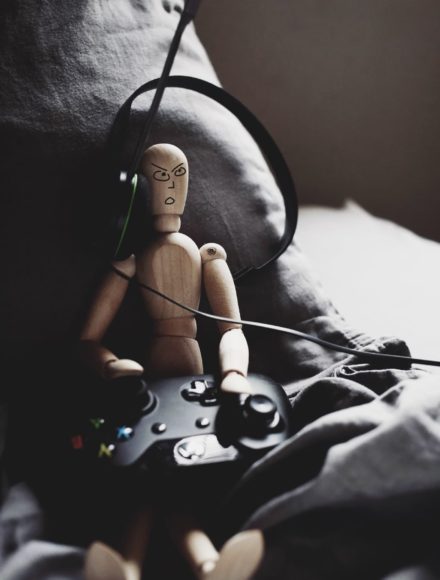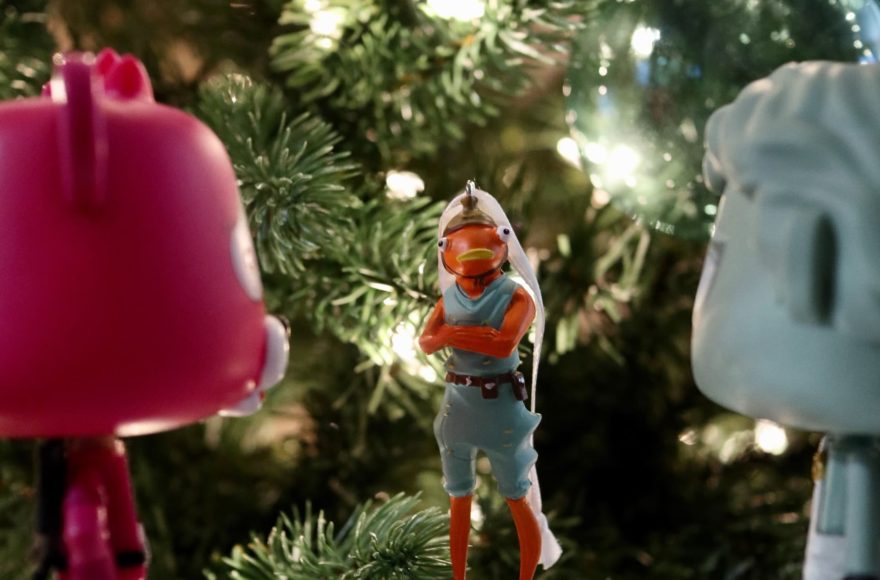The most tragic moment in Batman’s history almost looked like this

The last decade has been a renaissance for Jason Todd, the second character to fill the role of Robin, the world’s most famous superhero sidekick. He’s appeared in movies, TV shows, and video games, while even his comic book self became the leader of his own team of anti-heroes. But it’ll be quite some time before Jason manages to eclipse the story he’s most famous for. Out of all the characters who have put on the Robin suit, Jason is the one who died in it.
Yet he almost lived.
In 1988, DC Comics left the decision to off the character in the four-issue storyline A Death in the Family up to an incredibly close-running reader poll. To meet the publishing schedule, the creative team prepared for either eventuality by writing, and partially illustrating, a comic which Jason survived the Joker’s attempted murder and one in which he died. The tragic ending was the one chiseled into comic history.
On the 80th anniversary of Robin’s first appearance, Polygon is excited to present a look at some of that unfinished issue, including a high-resolution scan of rarely seen work from writer Jim Starlin, penciller Jim Aparo, and inker Mike DeCarlo straight from DC Comics’ archives.
“We didn’t kill the Boy Wonder. The readers did.”
A Death in the Family originally ran through Batman #426-429. In the first line of his postscript in the first collected edition of that story, Batman editor Denny O’Neil protested his own culpability in Robin’s death with one quote, “We didn’t kill the Boy Wonder. The readers did.”
Why would DC editorial leave the decision to kill a major character to readers? The answer is a mix of new technology and tradition. Staff at the company had been toying with the idea of using a then-cutting edge phone-polling system to allow DC readership real input on a story. “In effect,” O’Neil said in 1988, “extend our policy of heeding the opinions fans express in letters and conversations at conventions and comic shops.”
:no_upscale()/cdn.vox-cdn.com/uploads/chorus_asset/file/19777557/DEATH_FAMILY_AD.jpg)
Image: DC Comics
But the poll couldn’t be just any question. It had to be one that DC editorial genuinely wanted reader input on, and — since each phone call would cost a reader all of 50 cents — it had to be one that fans genuinely cared about. Jason Todd was “the logical candidate,” O’Neil said.
This was not because O’Neil or any of the other Batman office staff disliked the character, but because their readership seemed so divided on him. Jason was something very familiar in our current age: The first rebooted version of an idea backed by 40 years of fan nostalgia.
The problem Robin
In the early 1980s, Dick Grayson, having aged out of the Robin identity, became Nightwing, leaving Batman without a partner for the first time since 1940. Created by Gerry Conway and Don Newton, Jason was introduced in 1983 as as a carbon copy of Grayson, another circus kid with a heart of gold. But a few years later, when the Crisis on Infinite Earths offered an opportunity to reimagine anything and everything in the DC Universe, Jason was significantly reimagined.
Now he was a street urchin who met Batman for the first time when he attempted to jack the tires from the Batmobile; a hard-hearted and rebellious kid who Bruce encouraged to be Robin in the hopes that it would keep him from a life of crime. Where Dick Grayson quipped, Jason Todd sneered, and where Dick was the more empathic side of the Dynamic Duo, now it was Batman who was reigning in reckless impulses of his protege.
Fans were split on Jason, at least from what DC editorial could tell. Was he new take on Robin that offered pathos, drama, and a challenge for Batman? Or was he an annoying pest, unfit to wear the mantle that Dick Grayson had made so legendary?
A democratic vote would answer the question.
A Death in the Family
Jim Starlin and artist Jim Aparo’s 1988 comic Batman #426 kicked off A Death in the Family, which saw Jason Todd discovering that his biological mother might still be alive, then running away on a globe-trotting trip to unearth her identity. Meanwhile, Batman discovered that a cash-poor Joker was recouping his funds in an alarming way: by selling a nuclear warhead to Lebanese terrorists.
Oddly enough, these two missions led them to cross paths, foil the Joker, and find Jason’s real mom — where they cross paths with the Joker once more. In Batman #427, Batman ordered Jason not to confront the Joker until he returned from stopping a convoy full of deadly gas, but, fearing for his mother’s life, Jason went in anyway. Joker captured him, famously beat him with a crowbar, and then trapped him in a warehouse full of explosives. The issue’s final pages are of Batman arriving just in time to watch the building blow up.
Then, a house ad asked readers to call one number if they thought Jason should live, and another if they wanted him to die.
Starlin wrote two versions of Batman #428, and Jim Aparo and inker Mike DeCarlo worked on both of them, drawing certain pages twice — but very differently. Housed in DC Comics’ archive in Burbank, California are four of those unfinished pages, which I was lucky enough to view on a visit in summer 2019.
Until then, the most I had ever seen of the fabled alternate timeline where Jason lived was a single panel, reprinted in Les Daniel’s glossy hardcover Batman: The Complete History. In it, Batman cradled Jason’s battered body, his face raised to the sky in a rare smile, the tonal opposite of the published image, in which he sorrowfully lifted Jason’s corpse. Instead of tragic silence, the Caped Crusader exclaimed “He’s alive! Thank god!”
Here’s the complete page that panel was from, the unused page 10 of Batman #428. On the right is the page as it ran.
:no_upscale()/cdn.vox-cdn.com/uploads/chorus_asset/file/19773806/a_Death_In_the_Family_alternate_ending.jpg)
Image: Jim Aparo, Mike DeCarlo/DC Comics
:no_upscale()/cdn.vox-cdn.com/uploads/chorus_asset/file/19773830/IMG_92F67EDAF507_1.jpeg)
Image: Jim Starlin, Jim Aparo, Mike DeCarlo, Adrienne Roy/DC Comics
As I looked the pages over and tried not to freak out too visibly, DC archivist Ben LeClear told me a story of O’Neil — who had voted for Jason to live — and other DC Staff hanging around the offices, biting their nails well into the final evening of the poll. Every few minutes, they’d call the special phone number that allowed them to check on the vote tally, and nail-bite some more.
DC declined to release a full scan of the second-most-complete alternate page in their archives, but did offer the below scan of its first panel, which reveals Jason stable but in a comatose state, back in the United States.
:no_upscale()/cdn.vox-cdn.com/uploads/chorus_asset/file/19773807/a_Death_In_the_Family_alternate_ending_Bruce_visits_Jason.jpg)
The full page reveals more, including the arrival of Dick Grayson to Jason’s hospital room — although a penciled note in the margins says to strike him, and redraw the panels in favor of having Alfred in the scene instead. Dick rushed over as soon as he heard, and offered Bruce his help in tracking down the Joker.
In the published version of Batman #428, the same page depicts Jason’s funeral, where Alfred asks Bruce if he should get in touch with Dick Grayson. In both pages, Batman says roughly the same thing: “I’ll handle this by myself. No help from now on… that’s the way I want it.”
Duo no more?
In the 36 hours they were open, DC’s hotlines received 10,614 calls (at a total cost of $5,307 to the readership), and the verdict proved editorial’s assumption right: Fans were divided on Jason Todd — he was murdered by a margin of only 72 votes. (In later years, O’Neil has said that while he has no hard proof, he heard that “one guy […] programmed his computer to dial the thumbs down number every 90 seconds for eight hours.”)
But Jason’s death was not forgotten nor immediately overturned. Rather, it became a central part of the psyche of Batman stories for over two decades. To anyone who asked why Batman was such a loner, such a disciplinarian to his partners, such a hardass about who got to play vigilante in Gotham City, readers pointed to the glass case in the Batcave that contained a child’s empty costume.
Even when the superhero death/resurrection cycle exploded in the 1990s and after, there was a time when Jason was counted among the most hallowed of comic book deaths, alongside Uncle Ben, Gwen Stacy, and Batman’s parents themselves. He wasn’t resurrected until 2005, when he took his revenge on the Joker and swore to carry on Batman’s quest against crime, but now as the murderous Red Hood.
“Taking a Robin — any Robin — away from Batman was risky,” O’Neil said in his 1988 postscript to A Death in the Family. “Some pop culture historians have argued that Robin was a vital ingredient in Batman’s half-century of popularity, a necessary counter-balance to the essential grimness of the Batman mythos, and I was not sure they were wrong.”
:no_upscale()/cdn.vox-cdn.com/uploads/chorus_asset/file/19777974/IMG_2C5431EB8674_1.jpeg)
Batman wasn’t alone all that time. About six months after Jason’s death, O’Neil’s Batman office introduced Tim Drake, created by writer Marv Wolfman and artist Pat Broderick. Tim, named for Tim Burton, director of the new but not-yet-released Batman motion picture, was a bright kid who’d been in the circus audience the night Dick Grayson’s parents died. He’d deduced all on his own that Batman and Robin were Bruce Wayne and Dick Grayson, followed their careers with relish, and noticed when Batman began to lose himself in grief after Jason Todd’s death.
In the context of Jason’s murder by reader input, it’s easy to read Tim’s origin as a hedge against the same negative fan reaction that labeled his predecessor as a usurper of Dick Grayson’s legacy. Just like readers, Tim had grown up as a fan of Batman and Robin. His initial goal was to convince Dick Grayson to go back to being Robin, not to take the role himself. He only donned the suit when Two-Face trapped both senior vigilantes in a collapsed building, and he declined to don it again without Batman and Nightwing’s permission.
Tim was Robin for 20 years, until he himself was usurped by Bruce Wayne’s biological son, Damian. But what if Jason Todd had lived?
With Jason in a coma and Batman still vowing to work alone, who’s to say the Dark Knight might not have entered into a lone wolf period all the same? O’Neil and his creative teams might have taken the opportunity to have Jason sit out for a while, let the audience cool off, and then let him earn his costume back. Maybe they would have done it less than a year later, with Jason wary and more obedient from that time he disobeyed Batman’s orders and nearly got him killed. Maybe he’d have tried to get Dick Grayson to return, only to don the Robin costume himself to save his mentors’ lives.
These pages offer the tiniest of glimpses at the 30 years of Batman history that might have been, if not for 10,614 phone calls, and, perhaps, one guy with a computer.
—
Polygon




